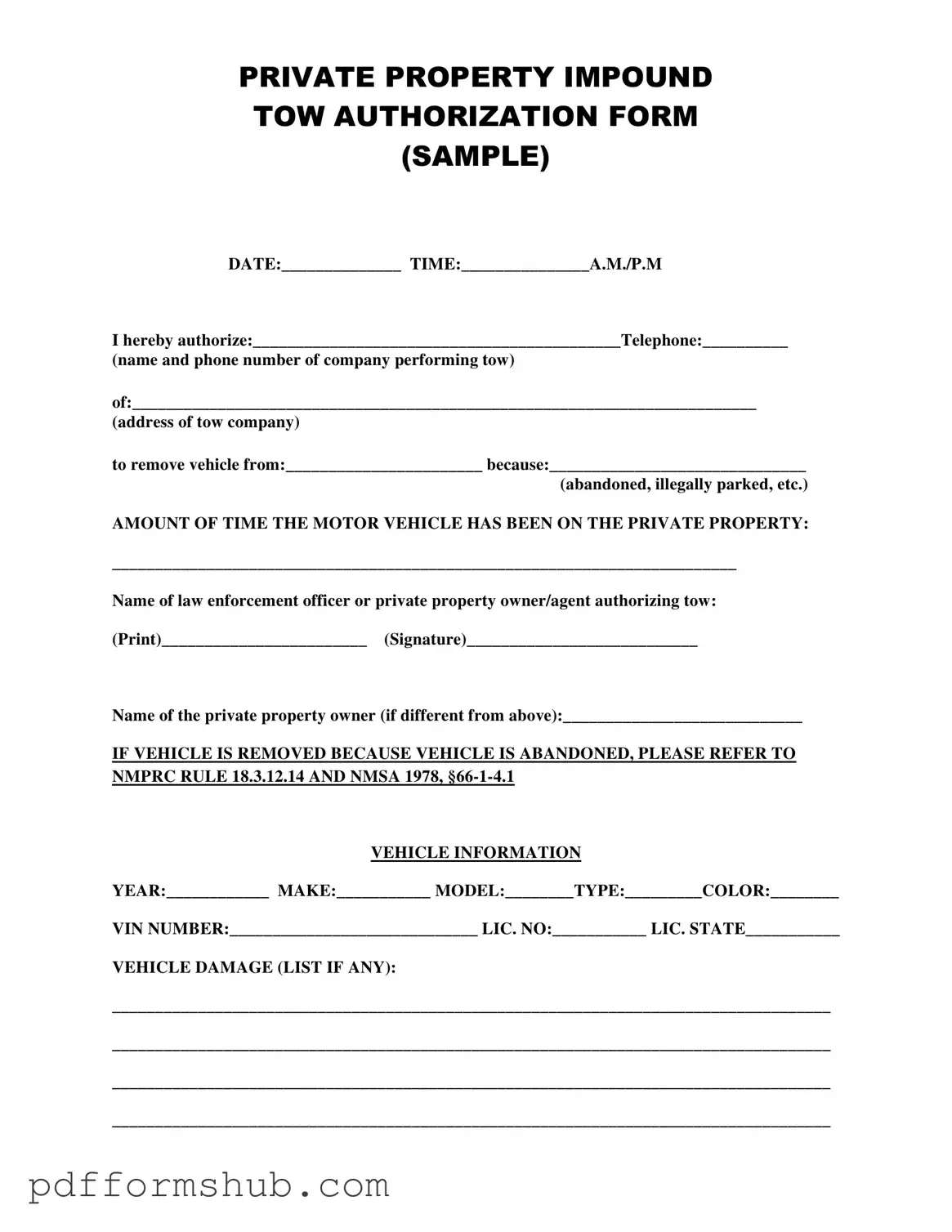When dealing with vehicle towing from private property, the Tow Authorization form plays a crucial role in ensuring that the process is handled legally and efficiently. This form serves as a written agreement between the property owner or their agent and the towing company, outlining the specifics of the towing situation. It includes essential details such as the date and time of authorization, the name and contact information of the towing company, and the location from which the vehicle is to be removed. The form also specifies the reason for the tow—whether the vehicle is abandoned, illegally parked, or for another valid reason. Additionally, it requires information about how long the vehicle has been on the property, which is important for legal compliance. The signature of the property owner or their representative is vital, as it confirms that the tow is authorized. For vehicles deemed abandoned, the form references relevant regulations that must be adhered to. Lastly, the form collects specific details about the vehicle itself, including its year, make, model, color, and license information, ensuring that there is no confusion about which vehicle is being towed. Understanding the components of this form is essential for both property owners and towing companies to navigate the towing process smoothly and lawfully.
